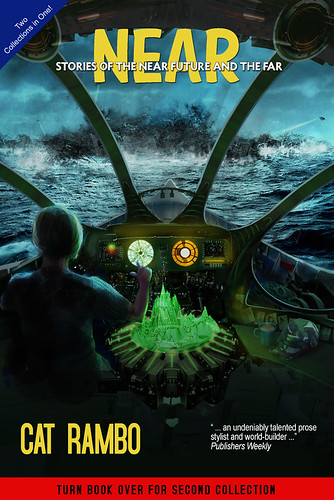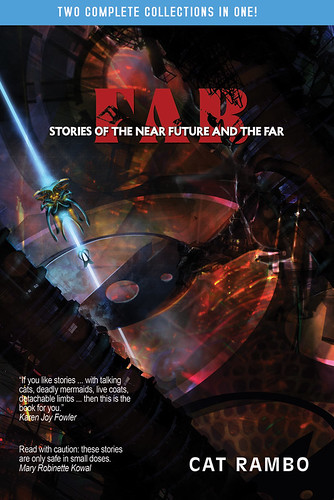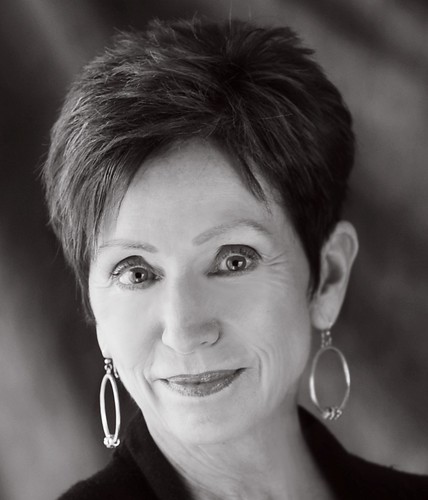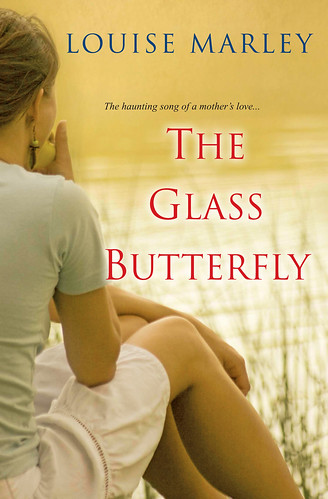Emotionally powerful fiction, as you know, brings characters into conflict with each other.
This is not to say that you can’t tell a story about someone who’s facing a powerful internal conflict, or a character who’s at odds with their environment, locked in a battle with impersonal forces, with physical survival as the stakes. However, the most affecting clashes in fiction are usually the struggles between individuals, those frictions that arise out of our natural attempts to connect with (and, sometimes, control) other people.
As I write this essay, I hope it’s true of those of you reading it that the important relationships in your life are positive ones: enduring friendships, solid family ties, and cordial business associations. So here’s an exercise: think about simple affection, and jot down some notes about the things you like about the people in your world. (Be as specific as you can. If you particularly admire your mother for her self-sufficiency, think of an example of a behavior that illuminates this trait.)
Now, look it over. What areas of common ground are the foundations of your friendships? Do you, like most of us, have a hierarchy of friendship: BFF, old schoolmates, colleagues, fellow writers, Twitter pals? How many worlds do you live in, and how well do these worlds co-exist?
All this exercise is meant to illustrate is that your characters probably don’t exist within a social vacuum. As you consider who they may clash with in a given story, think too about who supports them, and what resources—social and otherwise—they may have to draw upon.
If you’re stuck, consider a few common plots involving friendly relationships:
The Mentor—Be he Merlin or Obi-wan Kenobi, this older and more experienced ‘trainer’ figure turns up in adventure fiction, to prepare young heroes for big tests.
· Who are your real life mentors and inspirations?
Mercutio—this is the friend who serves as a sacrificial lamb. They are usually killed to up the stakes on a conflict already in progress, or to show that the villain really means business.
Loved one gone bad—sometimes a protagonist loses a friends’ support through selfishness, with the catastrophic result that the former ally joins forces with the antagonists of the story.
Confidante—Confidantes are handy—they give protagonists a chance to hash out their interior angst on the page. They are custodians of your characters’ secrets, and sometimes unwittingly betray them.
· Who do you confide in? What qualities make them especially trustworthy?
The above examples are just a small starter list of archetypes and the stories that spring from common, real-world relationships. Any of the ‘types’ I’ve listed above can be treated as a cliché or be fully-realized and brilliantly handled. The key thing to remember is that if your novel’s protagonist is so socially isolated that there is nobody at all to reach out to when they’re in a jam, you may have an underdeveloped cast of characters.
Here’s another thing: Affection and Conflict can go hand in hand!
Not all stories boil down to Hero Versus Villain, thankfully, and even the closest relationships can be eclipsed by conflict. For many of us, we’re far less likely to solve a murder or save the world from aliens than we are to have a painful argument with a loved one. How many of you might prefer getting a punch in the gut from a total stranger to having a verbal conflict with someone you love deeply?
A protagonist’s loved ones are in a more advantageous position to undermine, deceive and flat-out betray them than a villain-stranger. You cannot betray someone who doesn’t trust you.
So, with that in mind, let’s talk about lying for a minute. Lying, in fiction, has great potential to create both conflict and suspense: it also makes characters, and their motivations, more interesting. A common beginner mistake in writing is to have all or most of your characters tell the truth, the whole truth, and nothing but the truth. Nobody is perfectly honest; don’t allow your characters to fall into this trap.
Insofar as fiction has any rules, here’s a biggie:
If an important character tells a big lie in a novel, the truth must come out by the end.
Here are some basic things to ponder with regard to lying:
· A character should lie more easily to a stranger or casual acquaintance than a loved one (this assumes they are not a sociopath)
· A character needs a reason to lie. They—or someone they care about—should have something big at stake.
· Lies and other betrayals of trust are unique opportunities to examine an intriguing facet of human nature. Few things are worse than the experience of being betrayed by a loved one: this is deeply personal, deeply emotional material.
· If a character is going to tell a big lie, it’s probably a good idea to make them sympathetic in other ways.
Think: how many times have you told a casual acquaintance who asked how you were that you were “Fine,” even though the answer was anything but? Does that make you dishonest, a chronic liar? No. Withholding information and even deceiving people can self-protective, a necessity or even a kindness. We all do it. Remember this when your characters start to tell random strangers too much about their current situation.
As an exercise, look at the following lines of dialogue, assume they are untruthful, and see what you can deduce about the speakers:
· “That dress looks fab on you, darling.”
· “It’s all over with my ex—I was just returning some stuff he left at my place.”
· “I never touched her.”
· “I have no idea where Chris is.”
· “I sold the rifle—I’m not hunting anymore.”
· “I’m not very smart. Not as smart as you.”
· “It’s a gift for my sister—can you take it back to the U.S. with you and mail it?”
· “The dog ran away after you left for school today, sweetie.”
· “I will never touch another drink again.”
· “The doctor gave me a clean bill of health.”
Just knowing the above statements aren’t true laces them with conflict, doesn’t it? Try coming up with a few of your own. Look for speeches that are creepy, heartbreaking, or hilarious—hit as many emotional notes as you can find.
Betrayal
What about when the untruth is malicious—when it’s backed up by bad action? As I’ve said, betrayals by their very nature can only occur in relationships characterized by a certain degree of trust. This is true whether a character is a spy selling military secrets, an adulterous spouse, or a corporate embezzler.
In fiction, betrayals and lies tend to get bigger as your story unfolds—the dishonest character’s actions make things worse—and by the time the truth comes to light, the ‘victim’, whoever it is, has a significant chance of being hurt.
Imagine one of the sentences before: “It’s all over with my ex—I was just returning some stuff she left at my place.”
What if the speaker initially said this to his new girlfriend because his ex tracked him down and tried to start things up again? Perhaps the initial ‘fib’ was merely an attempt to avoid worrying the new girlfriend. Not necessarily a terrible crime, am I right? But then the ex starts calling, and he doesn’t want to admit he was dishonest. Now, in an all-too-human burst of panic, our speaker tells his new love something wildly untrue. “My ex has been diagnosed with leukemia,” he says. Suddenly things are very sticky, and can spiral out of control in a number of ways.
And, remember, sooner or later the truth will come to light, and then there will be consequences for everyone involved.
This brings us, finally, to. . .
Reconciliation
Not all betrayals are forgivable, and not all characters are capable of forgiveness. Scenes where your characters do let go of this type of pain can be tough to write. How do you say “I forgive you,” without falling into cliché?
One strategy is to look at what else there is in the relationship you’re exploring—the common ground that makes forgiveness possible and worthwhile, the past history. Often a reconciliation scene is less explicitly a case of Character A saying “Forgive me,” and Character B replying “Okay!” and more a case of a gentle, careful reaching out into one of those areas of commonality. This doesn’t mean things go back to the precise way they were before the betrayal occurred. Betrayal inevitably changes things—the trust is damaged, and the rules of the relationship will to reflect that.
Since fiction is, after all, about character change, this is fertile ground, well worth exploring.
So far, I’ve talked about engaging our protagonists in conflict not only with obvious bad guys, but with their loved ones. I’ve talked about how the people in a given character’s life can, even with good intentions, mislead and betray. Finally, because I’m still focusing on essentially positive relationships, I’ve talked about the potential for forgiveneness and reconciliation. Now, there’s one more thing you may want to consider . . .
Love, Intimacy and Sex
Writing about sex can be daunting, so take a breath and remind yourself that everything I am saying about friendship—its joys, its power to support and nourish a protagonist and its potential for conflict—goes for intimate relationships too.
Think about falling in love. Consider what happened, how the feelings developed, what you felt and what, if anything, went wrong. Most people may find that their love interests and sex partners are the people they trust most, and are most vulnerable to.
A huge proportion of Western literature traces the love relationships of thousands of couples, both conventional and unconventional. When you try your hand at showing people in love or on their way to it, remember, once again, to look for the details that make them and their romance unique.
Sex Scenes
What if it’s time to get your characters into the bedroom (or the supply closet? Or the Macy’s parade?)
Some writers revel in creating smut. Others are embarrassed. Most fall somewhere in between. Writing honest, unabashed sex scenes can take courage. What if your grandmother reads them, after all?
Assuming, though, that the threat of Grandma doesn’t stop you, here are a few important things to remember:
1) Sex scenes are about atmosphere, not which body parts end up where. Technical writing (“He inserted Tab A into Slot B”) is, generally speaking, something to be avoided. Creating an aura of sexual action, where readers can imagine what’s happening is more important than the blow by blow.
2) Sex scenes are about revealing character traits, developing relationships, and furthering conflict.
3) Sex doesn’t begin or end with intercourse.
Okay, enough of this chatter about good guys. What about villainy?
What I’m hoping you’ll remember as you sit down to write is that your protagonist’s allies come from somewhere. They are family, friends, compatriots and lovers. These are the threads from which your whole story is spun, so consider their color and texture carefully. A main character’s parents, siblings, spouses, ex-spouses, bosses, their sons and daughters, teachers, fellow-sufferers, doctors, grocers, landlords, classmates, slaves, confessors–and even their media heroes, are all potential sources of inspiration, nurturance, support and well-intentioned conflict.
Now, remember this too: your story’s antagonist or ‘bad guy,’ if it has such a thing, comes from the same pool. A rapist need not be merely an unnamed shadow-figure: he can be a teacher. A co-worker can set out to have your main character fired; an officer on the other side of the battlefield can take it into their head to maliciously shell your character’s foxhole. As you move from considering a character’s mostly-positive relationships to thinking about deliberate bad behaviour, consider the possibilities for complexity in these relationships too. The individuals involved aren’t just pieces of your plot. They are still human and should have comprehensible motives. What makes them a baddie is that their intentions are actively harmful.
Which brings us, conveniently and at last, from sex to violence!
One of the ironies of Western culture is that many of us are quite uncomfortable when writing about love, lust and sex. . . but we’re only too happy to dive into a war scene or a barroom brawl.
Most of us are fortunate enough to live in less violent worlds than we write in. Fiction is full of murder, fighting, and carnage because we fear these things, and we want to experience them in a safe, controlled fashion. Part of us likes to believe that practicing violence in this manner can prepare us for the reality. It can’t.
Isn’t it odd, then, that it can entertain?
Like it or not, fighting is entertaining. Hannibal Lecter is, to many, a cool character. Film genres like anime make terrible acts look bloodless, even beautiful. To write about violence in an entertaining fashion is to pretend that we can shake it off—that police can get into gunfights and sleep soundly at night after slaughtering nameless bad guys.
This is perfectly okay. It’s escapism, it’s part of our culture, and there’s no sense in pretending it’s not fun. But what if you want to say something true about violence? The answer lies earlier in this essay: you make its participants real to the reader.
Before we delve too deeply into the mechanics of violence, I want to revisit two points I mentioned with regard to sex scenes:
1) It’s not about which body parts end up where.
2) Intimate scenes are about revealing character traits, developing relationships, and furthering conflict.
The above statements are equally true whether your characters are rolling around on a beach in the throes of passion or if they are trying to drown each other.
Imagine a world where all the fight scenes were a literal description of the action:
Smith hit Jones, breaking his nose.
“Ow,” Jones said. He stabbed Smith in the chest with a barbecue fork.
Smith fell, clawing in his jacket for his gun.
Even if the above were more stylishly written, it would be pretty dull, wouldn’t it? Remember this about fictional violence—be it a knock-down brawl, a hair-pulling fight between five year olds, or even a vicious, relationship-ending father-son argument—people in conflict are emotional. Most of us live fairly pleasant, violence-free lives (I hope!) and it takes a great deal to get us to lash out physically. Yes, in fiction violent situations crop up more frequently than they do in the real world. And yes, some characters do round out their working day with a swordfight. This is no excuse to have them be emotionally distanced from the experience of harming another being—or being harmed by them.
Foreplay, Intercourse, Pillow-talk and Pregnancy
No, we haven’t slipped back into the smutty gutter—but remember that third point? Violence, like sex, rarely begins and ends with the act itself. There’s lead-up to the actual event; afterward, there’s character reaction to deal with. Depending on the degree of realism in your work, there may also be long-term fallout in the form of trauma.
Trauma, naturally, is yet another of those things that comes with a set of conventions and clichés. You’ve all seen stories that open with someone screaming themselves awake from a nightmare. You’ve all seen fictional victims of violence shrinking from the touch of others, having flashbacks, resisting therapy and then opening themselves up to that process. These things do happen, of course, but the range of human behavior is wider than the few possibilities I’ve mentioned. As with anything else, finding a more unique and yet believable response will make your work stand out.
Violence makes for exciting, suspenseful reading, and I invite you to try writing scenes that bring your characters into physical conflict. But what if that just doesn’t fit with your story? What if you’re writing about two people who are vying for a promotion at work, a parent attempting to bond with a difficult child, a person coming to grips with loss, or their gender identity, or even just something unexpected?
In a sense, the answer is the same either way. Whether you’re writing about an interpersonal struggle between two passive-aggressive relatives or using words to stage a knife fight, remember: sex, violence and conflict are all about the same thing—power. Who’s winning, and who’s losing? Who’s in control and how are the other parties responding? Does one character have something the other wants? These are the underlying dynamics of good scenebuilding—use them well.
Fisticuffs can be great, in other words, but not all stories need them. What they do need—what this entire lecture is about–is passion, purpose, and characters who work their way into your readers’ hearts.






